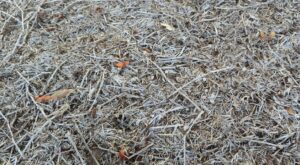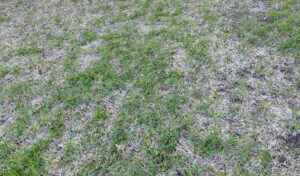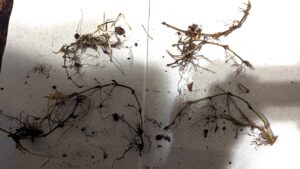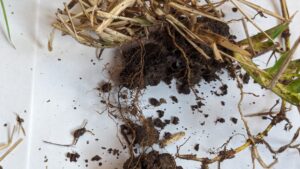If you are on this page, the turfgrass on your property is probably in trouble. Many people in the same boat are doing Google searches for St. Augustine Grass Identification, St Augustine Grass Diseases Pictures, and Why are there Brown Spots in St. Augustine Grass? Or your St Augustine may already be so far gone that you are searching for St. Augustine Grass Seed, or How Much is a Pallet of St Augustine sod? Of course, if you do those last two searches, you are about to put lipstick on a dead pig. Unless you first treat the root cause of whatever killed your St. Augustine to begin with, then it will 100% die again.
St Augustine Grass Diseases Identification - Lawn Fungus Diseases in St. Augustine Grass
Do you want to know how to spot fungus in St Augustine grass? Or be given some valuable guidelines for St Augustine grass disease identification of TARR, Take All Patch, Crown Right, Blight, and other fungal diseases rampant in St. Augustine grass in North Texas? This video shows all the fungus and diseases found in just a 5-7 minute walk across three blocks in Frisco, TX.
St. Augustine Grass Disease Pictures - Fungus in St. Augustine Grass
While the video does a better job of showing how fungus in St. Augustine grass has spread from property to property in North Texas, here are a couple of St Augustine grass disease pictures from the video if you don't want to watch it:

Severe Infection of TARR, Crown Rot, Culvalaria, Blight in St. Augustine in Frisco, TX.

Moderate Infection of TARR, Take All Patch, Crown Rot in St. Augustine in Lewisville, TX.

Moderate to Severe Infection of Take All Patch in St. Augustine, overshaded property in Colleyville, TX

Moderate infection of TARR & Take All Patch in St Augustine grass, very overshaded property Rockwall, TX
What is TARR? What is Take All Patch and Take All Root Rot?
The scientific name for TARR and Take All Patch is Gaeumannomyces Graminis. It is a soil-borne disease that lives on both living and dead stolons. And contrary to most funguses in warm-season turfgrasses, it also spreads in the winter when St. Augustine is dormant.
LSU has recently written an article about the rapid growth of Take All Root Rot and Take All Patch in southern Louisiana: https://www.lsuagcenter.com/profiles/jmorgan/articles/page1681851935668
They also honestly note that the various fungicides to treat it are not readily available at Home Depot to purchase by homeowners (and even if they are, they are not at strong enough concentrations, plus they need to be mixed with other fungicides based on the overall scope of the problem).
Oklahoma State wrote an article a couple of years ago related to Take All Patch and Bermuda Grass Decline Virus: https://extension.okstate.edu/programs/turfgrass-science/educational-materials/site-files/docs/common-diseases-of-turfgrasses-in-oklahoma.pdf.
Texas A&M has written several articles about Take All Patch in Bermuda and St Augustine grass. And their older articles, along with the great Neil Sperry, talk about "spreading some peat moss" to try and lower PH a little: https://plantdiseasehandbook.tamu.edu/landscaping/lawn-turf/sorted-by-names-of-diseases/take-all-patch-bermuda-decline-take-all-root-rot/
Texas has more than 250 different soil types. DFW Turfgrass Science LLC, a professional landscape consultant and lawn specialist, has experimented with spreading peat moss on top of the ground where TARR infections are moderate to severe. Not only was it a waste of time and money, but it made the problem worse in the most humid part of the summer in north Texas as the peat moss holds moisture at the surface in our heavy clay soils, the same as if you leave grass clippings on the ground; it may be OK as a small token attempt to fix the problem in other areas of TX, but not the great DFW area. Note: we have seen evidence that amending the soil does contribute to helping get this problem under control. But "amending" is not "sprinkling on top." Amending the soil = doing deep core aeration, then throwing the cores away and backfilling the holes with sand, sandy loam, and some compost/peat moss blend. Over a couple of years, combined with sulfur applications, you can lower a PH to the 7.0 area (but never to 6.5, which is impossible in this black clay).
If you suspect you have some type of lawn disease in your St. Augustine grass, call a CTP (Certified Turfgrass Professional) or someone with a degree in the field. TARR is a cancer-level disease in warm-season turfgrass, and you will not put a dent in it by sprinkling Home Depot fungicide and peat moss around your lawn. All of your cultural problems have to be fixed (as mentioned at the beginning of this page), then it requires intensive mixes of fungicide treatments for the first year; then, after the first year, you will have to put down preventative treatments to keep it in remission.
What are the Brown Spots in St. Augustine Grass?
Brown spots in St Augustine grass can be caused by about fifteen different things: chinch bugs, scale, grub worms, dog pee, compaction, drainage problems, dense/full shade, improper water coverage from irrigation (in certain areas where overlap is wrong %, not everywhere), nutrient soil deficiency, PH that is too high, fungus, TARR, Blight, Take All Patch, Crown Rot, Bipolaris Rot, Curvalaria, etc. The truth is this: every single St. Augustine property we have been asked to perform professional landscape consultant work for has had 3-8 of these problems, combining for one rotten pot of stew.
How to Revive St. Augustine Grass?
It is a good question: How to revive St Augustine grass? The answer, though, is very complex. You certainly won't do it by putting lipstick on a dead pig. IE: throwing new sod over the top of your existing problem(s). The average customer that calls us for a lawn specialist consultant has resodded 2-4X in the past 5-10 years. I repeat: the average customer that contacts us for a consult has resodded their St. Augustine 2-4X in the past 3-7 years.
To revive St Augustine grass, you must first call someone qualified and a specialist with lawn diseases and turfgrass. And your general "landscape guy" is not qualified. Once you find someone qualified, they will do a complete evaluation of everything listed above and send soil tests to one lab and disease stolon/rhizome tests to another. Once the results come back, you can stop guessing and start taking action to fix your turfgrass problems permanently.
Please visit our Contact Us page to set up a professional turfgrass consultation for your property.
